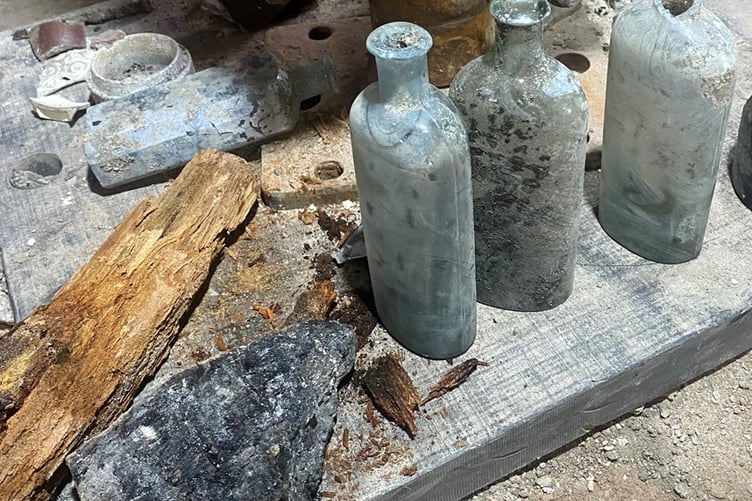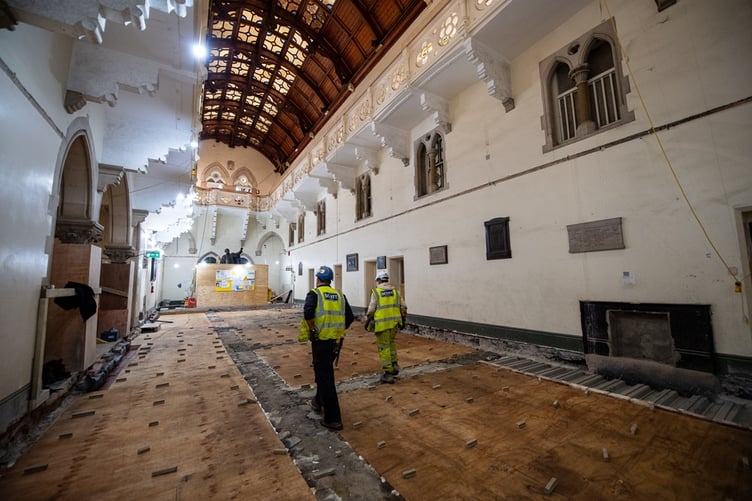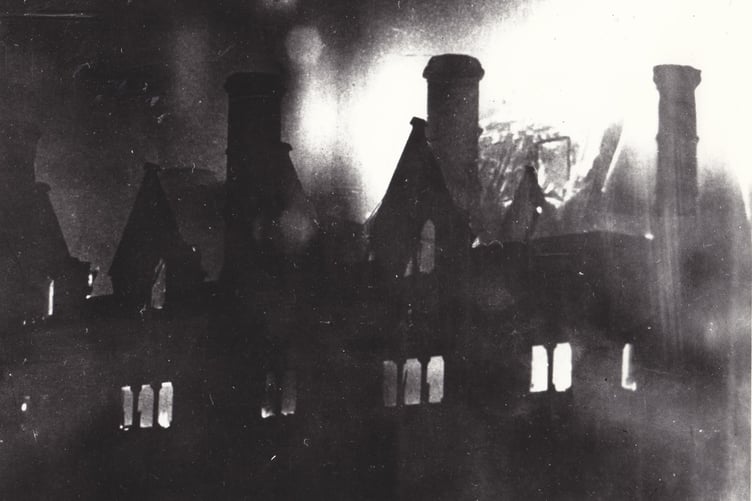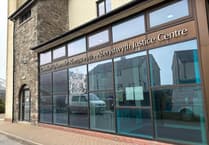A victim’s gravestone who perished in an 1885 fire at Aberystwyth’s Old College has been found.
Aberystwyth University’s Old College building went up in flames on the night of 8 July, killing three people as they tried to stop the flames.
The university has since discovered one gravestone, evidence of an old kitchen and charred walls whilst renovating the Grade I listed building, which began this April.

Jim O’Rourke, Project Manager for the Old College, said: “The Old College is remarkable and is revealing its own story to us as we work on its redevelopment.
“The fire could well have spelt the end for the University of Wales here in Aberystwyth, but the determination of students, staff with support from people right across Wales meant the rebuilding work could go ahead, though it took many years for the building to be completed.
“Our discoveries are adding to our understanding of the building and will enrich the stories of the Old College for future generations.”
According to newspaper records, the fire was caused by a “spontaneous combustion amongst the cotton waste used in cleaning up after the chemical experiments in the laboratory department” in the roof of the north wing, though the university was “without reasonable provision for putting out fires”.
The fire then spread through the rest of the building, leaving only the Castle House, Principal’s residence and the southern wing unscathed.
The bodies of James Edwin Brett, 21, Samuel Jones, father of six, and John Davies, father of two, were found under the rubble shortly afterwards- having been last seen running up the stairs before the museum floor collapsed - 2,000 people attended the funerals.

Newspapers of the time painted the fire as ”an end of Aberystwyth”, adding: “‘Welshmen heard the news... with as much pain and anguish as if their own homes had been burned down”.
The new £43m renovation project will transform the Old College, which cost the university money each year to keep closed, into a hotel and museum, set with a panoramic glass-fronted event space with views across Cardigan Bay.
The works have revealed charred timbers and blackened walls, “a testament to the intensity of the blaze”, in areas closed off after the fire.
They also discovered the quad floor was laid directly over rubble caused by the fire and an early underfloor heating system.
The university is working with Dyfed Archaeology Trust to preserve historic items during the works.




-with-her-son-Rufus-her-partner-and-younger-son-Noah.jpeg?width=209&height=140&crop=209:145,smart&quality=75)
Comments
This article has no comments yet. Be the first to leave a comment.